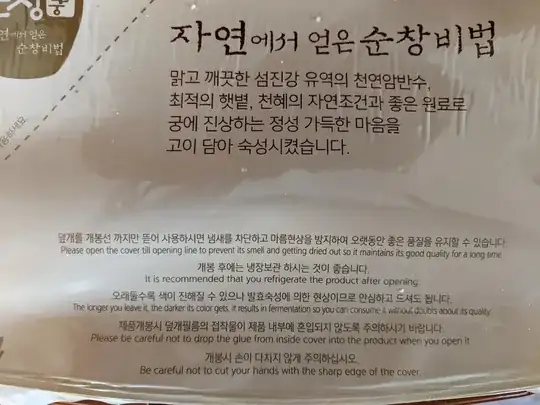As regards your hint, the best-by date is a bit of a myth with this stuff, and not, in any case, an expiration date. It has its own set of microbes in residence and rarely actually "spoils." It does darken more with age, but that's not spoilage. I'm working on a 3-kilo tub very similar to your first two images. This producer states that there is no expiration date, and they have kept it as long as 20 years, without refrigeration, and it's still good. They do advise using your nose and common sense.
The inner cover over the product on my Korean package, which unlike yours has English translations, says (verbatim)
"The longer you leave it, the darker its color gets. It results in
fermentation, so you can consume it without doubts about its quality"

I spread it on toast or crackers, thinly, often with other things. I add it to cooked rice. I've put it in peanut sauce. I do not "dilute it with water" unless trying to make miso soup (to which it should, AIUI be added after heating and before serving, not before heating.)
Thus far, I don't concern myself overly much with "proper" usage, other than the "don't cook it" aspect. I'm constantly trying to find lower salt versions, as I find it overly salty in general. That, of course, informs an approach to using it, which is to use it to supply the salt (and additional flavor) in anything you'd otherwise add salt to that seems like it would play well with the added flavor.
As far as I understand, Miso is also fermented - the lighter colored stuff is less aged, the darker colored is more aged, but it's not "unfermented" in either case. Your brand's info here. They even have recipes.
I have to wonder if you are using it so sparingly and diluting it so much that it's not able to contribute much flavor...

